The human body is an entity that carries different worlds within itself. Eyes, ears, kidneys, muscles, and bones form a world within themselves and branch off. Because of these serious details, the doctor of each part of each organ is different.
- What Does Optic Atrophy In The Eye Mean?
- Is There a Treatment for Eye Nerves?
- What Causes Ocular Nerve Damage?
- What Causes Optic Atrophy?
- What Is the Best Treatment for Optic Atrophy?
- Optic Nerve Atrophy Surgery
- Does Optic Atrophy Always Lead to Blindness?
- Can Stem Cells Cure Optic Atrophy?
- Which Vitamin is Deficient in Optic Atrophy?
- What are the Complications of Optic Atrophy?
- What are the Symptoms of Optic Atrophy?
- Is Optic Atrophy Contagious?
- How Is Optic Atrophy Diagnosed?
- Can Optic Atrophy Be Prevented?
- When Should I See My Healthcare Provider About Optic Atrophy?
- What Can I Expect if I Have Optic Atrophy?
- What Tests Will Be Done to Diagnose Optic Atrophy?
- How to Strengthen the Optic Nerve?
- What Does It Mean if the Eye Sees at 10 Percent?
- Optic Atrophy Cure: Is It Possible?
- Optic Atrophy Treatment in Turkey
- Can stress cause optic atrophy?
- What medication is used for optic nerve damage?
One of these areas is the eye. Our eyes are serious organs whose nerves reach the brain. If it is damaged or completely loses its function, our life is deeply affected.
In this article we wrote for you, we will talk about it.
What Does Optic Atrophy In The Eye Mean?
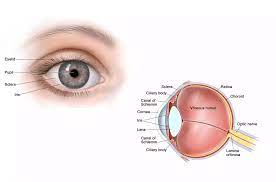
The nerves between the eye and the brain are the mechanisms that enable us to see by transmitting light and images to the brain. When these nerves become damaged and unable to function, it is called Optic Atrophy.
Is There a Treatment for Eye Nerves?
Some of the diseases caused by damage to the optic nerves are treated. Along with the doctor’s examination of the patients, eye scans are made in detail the type of disease and its underlying causes are determined and the treatment process is started.
However, with today’s technology, there is no cure for the Optic Atrophy disease that the person experiences. Diagnosis of this disease in the early stages and treatment of partially occurring optic atrophy is carried out, but if it is advanced, treatment is not possible.
What Causes Ocular Nerve Damage?
Sight is one of the most important life skills. The vision process of people begins with the light reaching the retina. This light turns into electrical energy from the retina and reaches the brain by passing through the visual pathways of the person. Light reaching the visual part of the brain passes through nerves called the optic nerve, optic chiasm, and optic tract.
These nerves unite and form the optic nerves. People can see thanks to the optic nerves. These eye nerves can be damaged due to some reasons and lose their function. We can list these reasons as follows:
- The person’s optic nerves are under a certain pressure. Thyroid diseases can create this pressure
- Infection in the middle ears or sinusitis affecting the optic nerves
- Occlusions in the vessels that support the functioning of the optic nerves that allow the eyes to see
- Damage to the optic nerves as a result of some trauma
- Damage to the optic nerves due to glaucoma
- Exposure to migraine headaches
- Bubbles that occur in a person’s brain vessels
- Benign or malignant tumors in the brain can be shown among the causes of this disease
What Causes Optic Atrophy?
Optic atrophy is a condition characterized by the degeneration or damage of the optic nerve, which can lead to vision impairment or loss. Understanding the underlying causes of optic atrophy is crucial for effective management and prevention.
- Traumatic Injuries: One common cause of optic atrophy is trauma, such as head injuries or severe blows to the eye area. Traumatic incidents can result in damage to the optic nerve, leading to the development of optic atrophy over time.
- Ischemic Optic Neuropathy: Ischemic optic neuropathy occurs when there is a reduced blood flow to the optic nerve. This can be caused by conditions like arteriosclerosis or giant cell arteritis, impacting the optic nerve’s health and contributing to optic atrophy.
- Inflammatory Disorders: Certain inflammatory conditions, including multiple sclerosis and optic neuritis, can trigger inflammation of the optic nerve. Prolonged inflammation may lead to optic nerve damage and, subsequently, optic atrophy.
- Genetic Factors: In some cases, optic atrophy can have a genetic component. Individuals with a family history of optic nerve disorders may be at a higher risk. Genetic testing and counseling can provide insights into the hereditary aspects of optic atrophy.
- Toxic Substances: Exposure to certain toxins or substances, either through environmental factors or medications, can contribute to optic nerve damage. This damage may progress to optic atrophy, emphasizing the importance of managing exposure to potentially harmful elements.
- Vascular Disorders: Conditions affecting the blood vessels, such as hypertension or diabetes, can impact the blood supply to the optic nerve. Proper management of these vascular disorders is crucial to reduce the risk of optic atrophy.
- Tumors and Compression: Tumors, especially those near the optic nerve, can exert pressure and compress the nerve fibers. This compression may lead to optic nerve damage and the development of optic atrophy.
- Neurodegenerative Diseases: Certain neurodegenerative disorders, like Alzheimer’s disease or Parkinson’s disease, may have optic nerve involvement, contributing to optic atrophy.
Understanding the diverse causes of optic atrophy allows for targeted interventions and preventative measures. Early detection and addressing the underlying factors can play a crucial role in preserving vision and improving the quality of life for individuals affected by optic atrophy. If you suspect optic atrophy or are experiencing vision changes, it is essential to consult with a healthcare professional for a thorough evaluation and appropriate management.
What Is the Best Treatment for Optic Atrophy?

There is no cure for optic atrophy, but there are treatments that can help to slow the progression of the disease and preserve vision. Treatment options vary depending on the underlying cause of the optic atrophy.
Some common treatments for this disease include:
- Medication: Medications can be used to treat underlying medical conditions that can cause optic atrophy, such as glaucoma, multiple sclerosis, and infections.
- Surgery: Surgery may be used to relieve pressure on the optic nerve or to repair damage to the nerve.
- Vision rehabilitation: Vision rehabilitation can help people with optic atrophy adapt to their vision loss and learn to use low vision aids.
In some cases, stem cell therapy is being used to treat this disease. However, this treatment is still in the experimental stages and more research is needed to determine its safety and effectiveness.
Optic Nerve Atrophy Surgery
Optic atrophy can significantly impact vision, and understanding the available surgical interventions is vital for individuals looking to improve their visual outcomes.
Understanding Optic Nerve Atrophy: Before delving into surgical options, let’s briefly review optic nerve atrophy. This condition involves the deterioration of the optic nerve, leading to vision impairment. Various factors, such as trauma, inflammation, or diseases like glaucoma, can contribute to optic nerve damage.
Indications for Surgery: Optic nerve atrophy surgery becomes a consideration when conservative treatments and interventions prove insufficient. Surgeons may recommend surgery to address specific underlying causes or to alleviate pressure on the optic nerve.
Surgical Approaches:
- Optic Nerve Decompression Surgery:
- This procedure aims to relieve pressure on the optic nerve, often caused by conditions like idiopathic intracranial hypertension. Surgeons may remove bone or tissue to create more space and reduce compression.
- Optic Nerve Fenestration:
- Fenestration involves creating small openings in the optic nerve sheath to allow excess cerebrospinal fluid to drain, reducing pressure on the nerve.
- Reconstructive Surgery:
- In cases where trauma or injury has led to optic nerve damage, reconstructive surgery may be employed to repair and restore the optic nerve’s function.
Post-Surgery Care and Rehabilitation: Successful recovery from optic nerve atrophy surgery involves diligent post-operative care. Patients may undergo rehabilitation, including vision therapy and lifestyle adjustments, to maximize the benefits of the surgical intervention.
Consultation and Considerations: Before opting for optic nerve atrophy surgery, it is crucial to consult with a qualified ophthalmologist or neurosurgeon. A comprehensive evaluation will determine the most suitable surgical approach based on the individual’s specific condition and medical history.
Does Optic Atrophy Always Lead to Blindness?
No, optic atrophy does not always lead to blindness. The severity of vision loss depends on the underlying cause and the extent of the damage to the optic nerve. Some people with optic atrophy may experience only mild vision loss, while others may become completely blind.
The following factors can affect the severity of vision loss in people with optic atrophy:
- The underlying cause of the optic atrophy
- The extent of the damage to the optic nerve
- The age of the person when the optic atrophy develops
- The presence of other medical conditions
Early diagnosis and treatment of this disease can help to slow the progression of the disease and preserve vision. Therefore, it is important to see a doctor right away if you experience any symptoms of optic atrophy.
Can Stem Cells Cure Optic Atrophy?
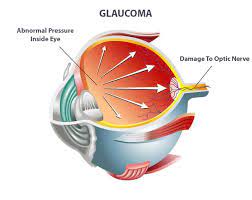
Stem cell therapy is a promising new treatment for this disease, but it is still in the experimental stages. Stem cells are undifferentiated cells that can develop into any type of cell in the body. This means that stem cells could potentially be used to repair damaged optic nerve cells and restore vision.
There are a few different types of stem cells that could be used to treat this disease. One type is embryonic stem cells, which are derived from embryos. Another type is adult stem cells, which are found in various tissues throughout the body. Induced pluripotent stem cells (iPSCs) are a third type of stem cell that can be created from adult cells by reprogramming them to an embryonic-like state.
Each type of stem cell has its own advantages and disadvantages. Embryonic stem cells have the potential to develop into any type of cell in the body, but they are also more likely to cause tumors. Adult stem cells are less likely to cause tumors, but they are also more difficult to differentiate into specific cell types. iPSCs have the potential to develop into any type of cell in the body and are less likely to cause tumors than embryonic stem cells, but they are more difficult to produce.
Several clinical trials are currently underway to evaluate the safety and effectiveness of stem cell therapy for this disease. The results of these trials are promising, but more research is needed to determine the long-term safety and effectiveness of this treatment.
If you are interested in stem cell therapy for this disease, it is important to talk to your doctor. They can help you to determine if you are a candidate for this treatment and can refer you to a clinical trial if appropriate.
Here are some things to keep in mind about stem cell therapy for optic atrophy:
- It is still an experimental treatment and more research is needed to determine its long-term safety and effectiveness.
- There are a few different types of stem cells that could be used to treat this disease, each with its own advantages and disadvantages.
- Stem cell therapy can be expensive and may not be covered by insurance.
- There are some risks associated with stem cell therapy, such as infection, tumor formation, and rejection of the transplanted cells.
Which Vitamin is Deficient in Optic Atrophy?

There is no single vitamin deficiency that is directly associated with this disease. However, deficiencies in certain vitamins, such as B1, B2, B3, B6, B9, and B12, can damage the optic nerve and lead to vision loss.
These vitamins are essential for the proper functioning of the nervous system, including the optic nerve. Deficiencies in these vitamins can cause a variety of neurological symptoms, including numbness, tingling, weakness, and vision loss.
In addition to vitamin deficiencies, other factors that can contribute to optic atrophy include:
- Glaucoma
- Multiple sclerosis
- Optic neuritis
- Head trauma
- Tumors
- Stroke
- Infections
- Inherited conditions
What are the Complications of Optic Atrophy?
Optic atrophy, a condition characterized by the degeneration of the optic nerve, can lead to various complications that impact vision and overall eye health. Understanding these complications is crucial for individuals affected by optic atrophy and their healthcare providers.
- Vision Loss: The primary complication of optic atrophy is progressive vision loss. As the optic nerve deteriorates, the transmission of visual signals to the brain becomes impaired, resulting in a gradual decline in vision. The extent of vision loss can vary from mild to severe.
- Peripheral Vision Impairment: Optic atrophy often leads to the impairment of peripheral vision. Individuals may experience a narrowing of their visual field, making it challenging to perceive objects and movement in their surroundings.
- Color Vision Deficiency: The optic nerve plays a crucial role in color perception. Optic atrophy can affect an individual’s ability to distinguish between different colors, leading to color vision deficiency or even complete color blindness in severe cases.
- Contrast Sensitivity Reduction: Reduced contrast sensitivity is another complication associated with optic atrophy. This can make it difficult for individuals to distinguish between objects that have similar tones or shades, impacting activities such as reading and driving.
- Depth Perception Challenges: Optic atrophy may affect depth perception, making it challenging to accurately judge distances. This can result in difficulties with tasks that require spatial awareness, such as navigating stairs or reaching for objects.
- Functional Impairments: Daily activities such as reading, writing, and recognizing faces may become increasingly challenging as optic atrophy progresses. Functional impairments can significantly impact the quality of life for individuals affected by this condition.
- Emotional and Psychological Impact: Coping with vision loss and its associated challenges can have emotional and psychological consequences. Individuals with optic atrophy may experience feelings of frustration, anxiety, or depression. Support from healthcare professionals, friends, and family is essential for managing these emotional aspects.
- Underlying Causes Complications: Addressing the complications of optic atrophy may also involve managing the underlying causes that contribute to optic nerve degeneration. Conditions such as diabetes, vascular disorders, or genetic factors may require specific interventions to prevent further complications.
Early detection, regular eye examinations, and appropriate management strategies can help mitigate the complications associated with optic atrophy. Individuals experiencing symptoms of vision loss or related issues should seek prompt medical attention to ensure timely intervention and personalized care.
What are the Symptoms of Optic Atrophy?
There are certain symptoms that occur with this disease. We can list these symptoms as follows:
- The person begins to see blurred
- Disturbances in the person’s peripheral vision
- Disorders of the person in seeing colors
- Complete loss of one’s vision
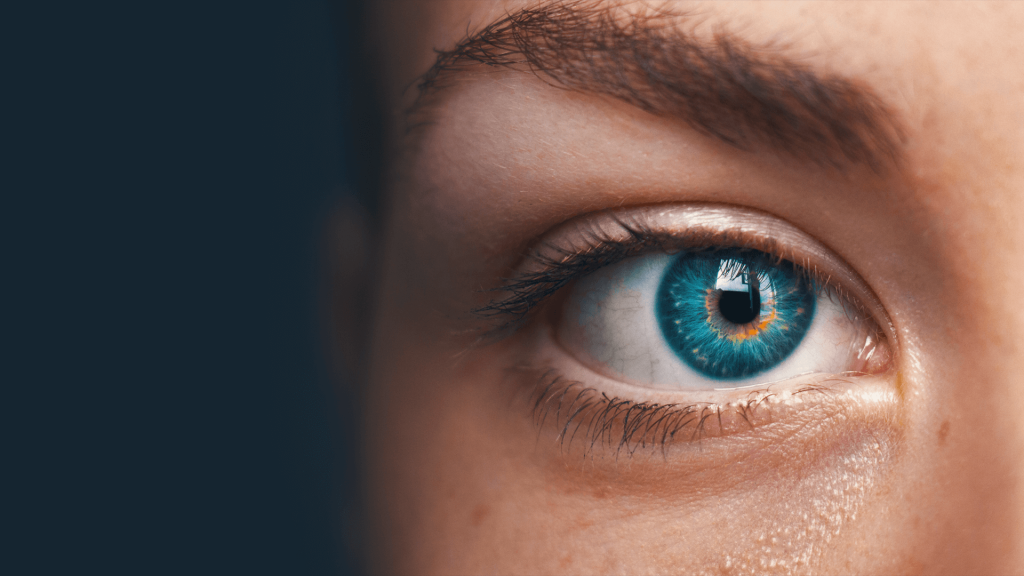
Is Optic Atrophy Contagious?
Optic atrophy is a condition that damages the optic nerve, which carries visual information from the eyes to the brain. This damage can lead to vision loss, which can be partial or complete. This disease can be caused by a variety of factors, including glaucoma, multiple sclerosis, optic neuritis, head trauma, tumors, stroke, infections, and inherited conditions.
Is optic atrophy contagious?
No, optic atrophy is not contagious. This means that you cannot get this disease from someone else. However, some of the underlying causes of it, such as infections, can be contagious. For example, if you have a viral infection that causes optic neuritis, you can spread the virus to other people. However, even if you spread the virus to someone else, they will not necessarily develop optic atrophy.
How to prevent optic atrophy
There is no way to completely prevent this disease, but there are things you can do to reduce your risk of developing the condition. These include:
- Getting regular eye exams
- Treating any underlying medical conditions that can cause it
- Avoiding head injuries
- Wearing protective eyewear when participating in sports or activities that could damage your eyes
- Eating a healthy diet
- Exercising regularly
If you have optic atrophy
If you have it, there is no cure for the condition. However, there are treatments that can help to slow the progression of the disease and preserve vision. Treatment options may include:
- Medication to treat the underlying cause of the optic atrophy
- Surgery to relieve pressure on the optic nerve
- Vision rehabilitation to help people with optic atrophy adapt to their vision loss
How Is Optic Atrophy Diagnosed?
This diagnosis is made after a doctor’s examination with the help of an ophthalmoscope, OTC, tomography, and MRI.
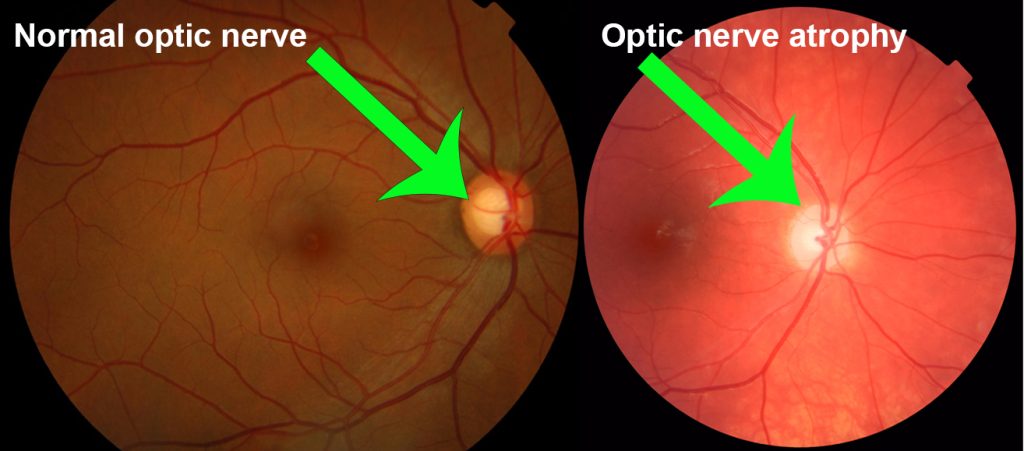
Can Optic Atrophy Be Prevented?
There is no way to completely prevent optic atrophy, but there are things you can do to reduce your risk of developing the condition. These include:
- Getting regular eye exams: Early detection and treatment of underlying medical conditions that can cause optic atrophy is essential for preventing vision loss.
- Managing chronic health conditions: If you have a chronic health condition that can increase your risk of optic atrophy, such as diabetes or high blood pressure, it is important to work with your doctor to manage it effectively.
- Avoiding head injuries: Head injuries can damage the optic nerve, so it is important to take steps to protect your head, such as wearing a helmet when participating in sports or activities that could put you at risk for a head injury.
- Wearing protective eyewear: Wearing protective eyewear, such as sunglasses or safety glasses, can help to protect your eyes from injuries and infections that could lead to optic atrophy.
- Eating a healthy diet: Eating a healthy diet that is rich in fruits and vegetables can help to keep your eyes healthy and reduce your risk of developing eye diseases.
- Exercising regularly: Regular exercise can help to improve your overall health and reduce your risk of developing chronic health conditions that can increase your risk of optic atrophy.
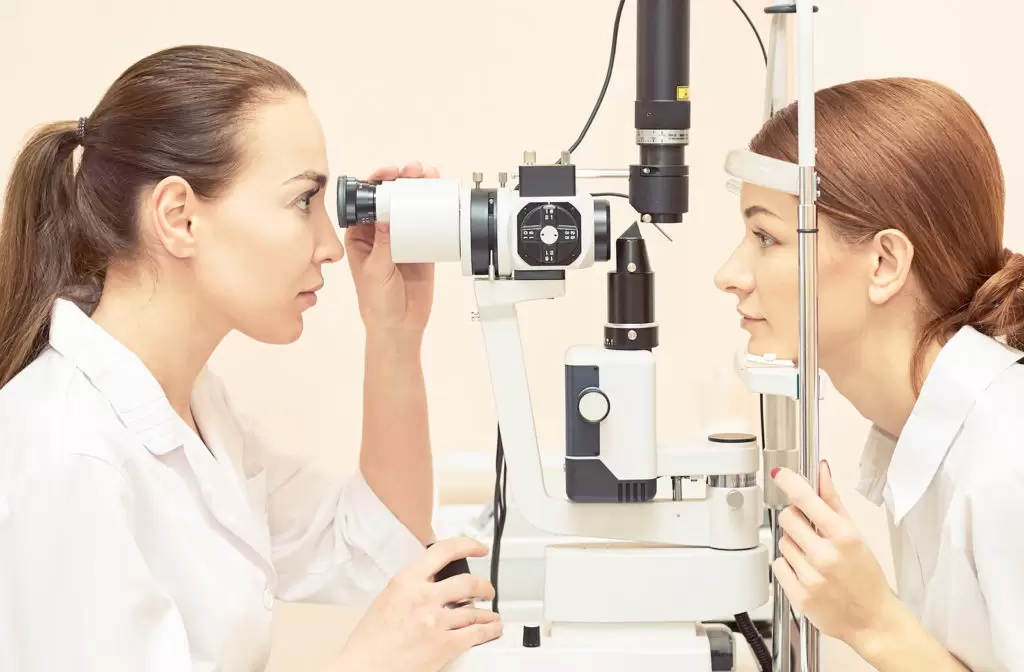
When Should I See My Healthcare Provider About Optic Atrophy?
Optic atrophy is a condition that damages the optic nerve, which carries visual information from the eyes to the brain. This damage can lead to vision loss, which can be partial or complete. Optic atrophy can be caused by a variety of factors, including glaucoma, multiple sclerosis, optic neuritis, head trauma, tumors, stroke, infections, and inherited conditions.
When to see your healthcare provider
You should see your healthcare provider for optic atrophy if you experience any of the following symptoms:
- Blurred vision
- Loss of peripheral vision
- Difficulty seeing in low light
- Dimming of colors
- Pain or discomfort in the eyes
- Changes in color vision
- Double vision
If you have any of these symptoms, it is important to see your healthcare provider right away to determine the underlying cause and to begin treatment if necessary. Early diagnosis and treatment of optic atrophy can help to slow the progression of the disease and preserve vision.
Other reasons to see your healthcare provider
Even if you do not have any symptoms of optic atrophy, there are other reasons why you may need to see your healthcare provider for the condition. For example, if you have any of the following risk factors for optic atrophy, you should talk to your doctor about getting regular eye exams to monitor for signs of the disease:
- Glaucoma
- Multiple sclerosis
- Diabetes
- High blood pressure
- Head trauma
- Family history of optic atrophy
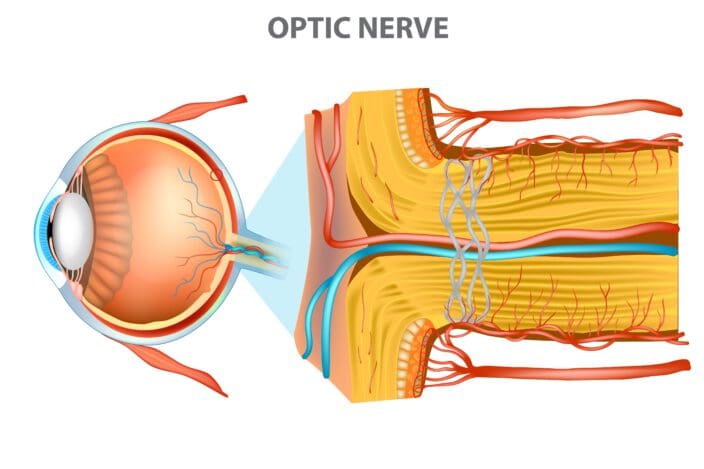
What Can I Expect if I Have Optic Atrophy?
Optic atrophy is a condition that damages the optic nerve, which carries visual information from the eyes to the brain. This damage can lead to vision loss, which can be partial or complete. Optic atrophy can be caused by a variety of factors, including glaucoma, multiple sclerosis, optic neuritis, head trauma, tumors, stroke, infections, and inherited conditions.
What to expect?
If you have optic atrophy, the symptoms and progression of the disease will vary depending on the underlying cause and the severity of the damage to the optic nerve. However, some common symptoms of optic atrophy include:
- Blurred vision
- Loss of peripheral vision
- Difficulty seeing in low light
- Dimming of colors
- Pain or discomfort in the eyes
What Tests Will Be Done to Diagnose Optic Atrophy?
Optic atrophy is a condition that damages the optic nerve, which carries visual information from the eyes to the brain. This damage can lead to vision loss, which can be partial or complete. Optic atrophy can be caused by a variety of factors, including glaucoma, multiple sclerosis, optic neuritis, head trauma, tumors, stroke, infections, and inherited conditions.
- Visual acuity test: This test measures your ability to see letters and numbers at different distances.
- Visual field test: This test measures your peripheral vision, or the range of vision you have on either side of your central vision.
- Fundoscopy: This test uses an ophthalmoscope to examine the back of your eye, including the optic nerve.
- Optic nerve imaging: This may include optical coherence tomography (OCT) or magnetic resonance imaging (MRI) to take pictures of the optic nerve.
- Blood tests: Blood tests can be used to check for infections, autoimmune disorders, and other medical conditions that can cause optic atrophy.
- Electrodiagnostic tests: These tests measure the electrical activity of the retina and optic nerve.
Once your doctor has diagnosed optic atrophy, they will work with you to determine the underlying cause of the condition and develop a treatment plan.

How to Strengthen the Optic Nerve?
Before we get eye nerve diseases, we can support our eye nerves and prevent them from being damaged, especially by eating healthily. Eating foods that contain vitamins and minerals that are good for the eyes will support our eye health. Briefly, we can list these foods as follows:
- Foods such as spinach, green tea, walnuts, zucchini, salmon, carrots, grapes, corn, and kiwi support eye health.
What Does It Mean if the Eye Sees at 10 Percent?
In some cases, the eyes lose their function and the person’s vision distance is shortened. We can explain this with the following example:
For example, a person with healthy vision can see an object at 100 meters, while a person with 10% vision can see the same object at the same distance at a distance of 10 meters.
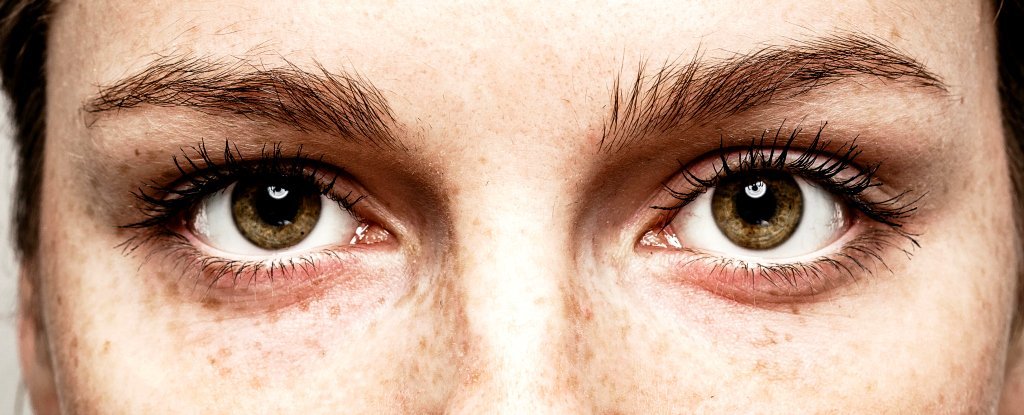
Optic Atrophy Cure: Is It Possible?
Optic atrophy is a condition that causes damage to the optic nerve, which carries visual information from the eyes to the brain. This damage can lead to vision loss, which can be partial or complete. There is no cure for optic atrophy, but there are treatments that can help to slow the progression of the disease and preserve vision.
What causes optic atrophy?
Optic atrophy can be caused by a variety of factors, including:
- Glaucoma
- Multiple sclerosis
- Optic neuritis
- Head trauma
- Tumors
- Stroke
- Infections
- Inherited conditions
What are the symptoms of optic atrophy?
The symptoms of optic atrophy can vary depending on the underlying cause of the condition. However, common symptoms include:
- Blurred vision
- Loss of peripheral vision
- Difficulty seeing in low light
- Dimming of colors
- Pain or discomfort in the eyes
How is optic atrophy diagnosed?
Optic atrophy is diagnosed through a comprehensive eye exam. This exam may include:
- Visual acuity test
- Visual field test
- Fundoscopy
- Optic nerve imaging
How is optic atrophy treated?
There is no cure for optic atrophy, but there are treatments that can help to slow the progression of the disease and preserve vision. Treatment options may include:
- Medication to treat the underlying cause of the optic atrophy
- Surgery to relieve pressure on the optic nerve
- Vision rehabilitation to help people with optic atrophy adapt to their vision loss
Is there a cure for optic atrophy?
Unfortunately, there is no cure for optic atrophy. However, researchers are working on developing new treatments that may be able to reverse the damage caused by the disease. One promising area of research is stem cell therapy. Stem cells can be used to create new nerve cells, which may be able to replace the damaged nerve cells in the optic nerve.
What is the outlook for people with optic atrophy?
The outlook for people with optic atrophy depends on the underlying cause of the condition and the severity of the damage to the optic nerve. Some people with optic atrophy may experience only mild vision loss, while others may become completely blind. However, there are many resources available to help people with optic atrophy live full and productive lives.
Optic Atrophy Treatment in Turkey
Treatment of many diseases can be carried out in Turkey with a high success rate. The quality of life of people is increased by reducing the effects of incurable diseases with both surgical operations and drug treatments.
One of these diseases is Optic Atrophy which occurs in the eye. Many foreign people prefer Turkey during the treatment process in order to include the curative part of this disease, which has not yet been cured, into their lives. Treatments, especially at affordable prices, are one of the reasons why many people prefer them.
It is not correct to say the price of the treatment of Optic Atrophy in Turkey without seeing the patient. Although each disease is individual, there are many factors that affect the course of the treatment process. You can also contact us to have information about this disease and to learn the price information.
Can stress cause optic atrophy?
Stress is not a direct cause of optic atrophy, but it can contribute to the development of the condition in certain circumstances. For example, stress can worsen existing medical conditions that can lead to optic atrophy, such as glaucoma and multiple sclerosis.
What medication is used for optic nerve damage?
There are a variety of medications that can be used to treat optic nerve damage, depending on the underlying cause. Some common medications include:
Corticosteroids: Corticosteroids are powerful anti-inflammatory drugs that can be used to reduce inflammation of the optic nerve. They are commonly used to treat optic neuritis, a condition that causes inflammation of the optic nerve.
Antibiotics: Antibiotics are used to treat optic nerve damage caused by infections.
Antifungal medications: Antifungal medications are used to treat optic nerve damage caused by fungal infections.
Antiviral medications: Antiviral medications are used to treat optic nerve damage caused by viral infections.
Immunosuppressants: Immunosuppressants are drugs that suppress the immune system. They are sometimes used to treat optic nerve damage caused by autoimmune disorders, such as multiple sclerosis.
Neurotrophic factors: Neurotrophic factors are proteins that promote the growth and survival of nerve cells. They are being investigated as a potential treatment for optic nerve damage.

Vimfay International Health Services